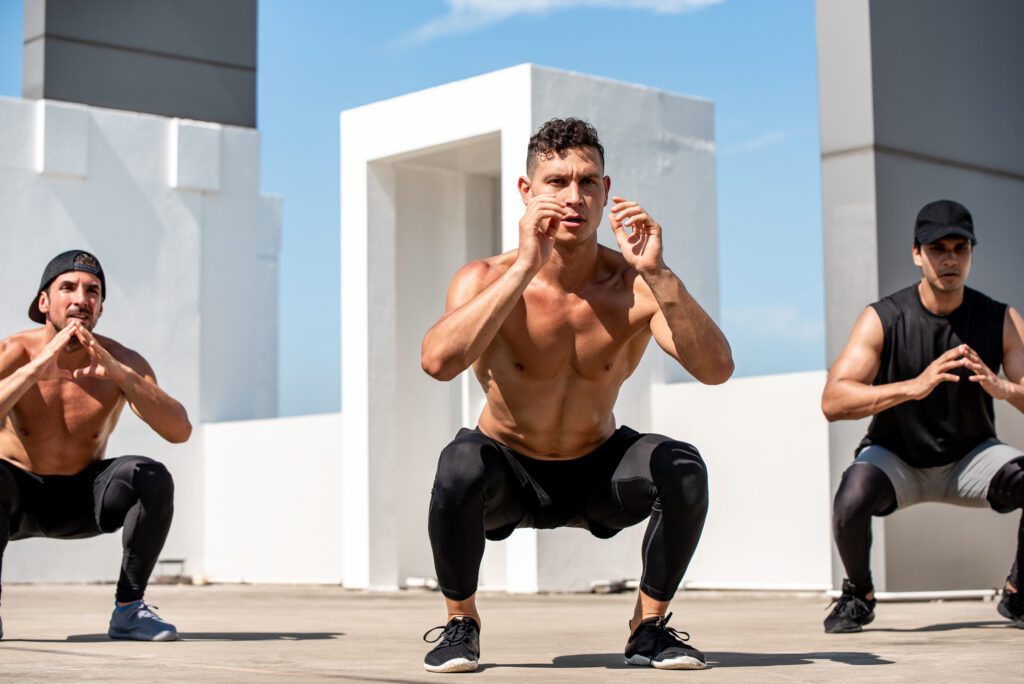
The dream of washboard abs is probably the ultimate reason why you suffer through long planks and endless situps. But along the way to that six-pack, you’ll see even bigger benefits. Here are eight great reasons to stay motivated on ab day. And once you’re sufficiently motivated, do these best abs exercises.
1. OWN YOUR SPORT
Core training makes you a better athlete in just about any strength or speed sport, says Dr Stuart McGill, a professor of spine biomechanics at the University of Waterloo. That’s because a strong core lets you transfer more power to your limbs so you can punch harder, smash a drive farther, and kick a ball with more force.
2. BOOST BALANCE
“A strong core keeps your torso in a more stable position whenever you move, whether you’re playing sports or just doing chores,” says sports medicine specialist Dr Christopher Mendler. That helps you avoid injury and makes your movements more efficient. Test your balance: Stand on one leg with your arms extended. If you last 60 seconds, you pass.
3. BEAT BACK PAIN
A core-training program can both prevent and control lowerback pain, Canadian research suggests. If you’ve had back trouble, you’ll be better off doing core exercises that keep you still (like side planks) than moves where you fully flex your spine (like situps). Side planks, bird dogs, and curlups are also great alternatives.
4. STAND TALLER
Core training, specifically Pilates, can help you stand up straight. Men who took three hourlong Pilates sessions a week for eight weeks saw significant improvement on a postural stability test, a study in Isokinetics and Exercise Science found.
5. NAIL A PR
A neglected core is like thin plywood; a strong core is more like a row of 2x4s, giving you a solid platform from which you can lift more weight. “Keeping your core engaged throughout a squat or bench press will increase your power to lift as well as keep your lower back safe,” says Liza Edebor, who trains Cubs pitcher Jake Arrieta. Begin each of your heavy strength workouts with 10 minutes of dedicated core training.
6. MOVE LIKE A NINJA
Doing a combo of core exercises and instability exercises, such as TRX and single-leg moves, can help you become more agile. A study in the journal Kinesiology found that men who did these workouts performed better on the hexagon agility test than those who did traditional bodybuilding moves. Try a variation: Using thick tape, mark a hexagon on the floor with 24-inch sides and about 120-degree angles. Place a 12-inch tape strip in the middle as the starting position. Hit a timer. From the start, double-leg hop to each side of the hexagon and back to the center in a clockwise direction, equaling 12 jumps. Repeat, this time going counterclockwise. You should be able to finish both directions in an equal amount of time. If you can’t, then train your weak direction.
7. CONTROL INFLAMMATION
To assess the effect of core-intensive training on inflammation, scientists reviewed eight studies and found that such training could reduce inflammation markers by as much as 25 per cent – close to the result you’d see from meds like statins. That may enhance recovery, well-being, and general health.
8. LIVE LONGER
A six-pack can keep you from going six feet under—at least anytime soon. That’s what Mayo Clinic researchers concluded when they looked at 11 studies on waist circumference. Men with waists of 43 inches or larger had a 52 percent greater risk of premature death than guys whose waists were 35 inches or smaller. Each 2-inch increase in waist size was associated with a 7 per cent bump in death risk.
This article was originally published on MensHealth.com

















